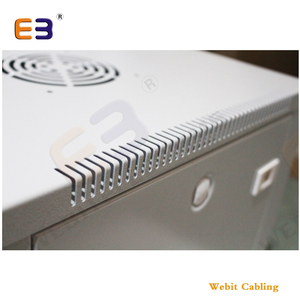Introduction to Indoor Telecom Cabinets
Indoor telecom cabinets serve as essential enclosures for housing critical telecommunications equipment. Designed primarily for communication networks, these cabinets provide a secure, organized, and optimized environment conducive to high-performance operation. As the demand for digital connectivity continues to escalate, the importance of robust indoor telecom cabinets cannot be understated. They play a pivotal role in ensuring that communication infrastructure operates smoothly, making them a cornerstone in telecommunications facilities.
Types of Indoor Telecom Cabinets
Indoor telecom cabinets come in various types, each tailored to meet specific operational requirements and environments. Here are some of the most commonly used types:
- Standard Rack-Mount Cabinets: These are the most prevalent types, designed to accommodate standard 19-inch equipment racks. They offer flexibility and are suitable for a range of telecom applications.
- Wall-Mounted Cabinets: Ideal for limited spaces, these cabinets are designed to be mounted on walls, saving floor space while still maintaining accessibility to equipment.
- Server Cabinets: Specifically designed for housing servers, these cabinets feature enhanced airflow and cooling capabilities, ensuring the equipment stays within optimal operating temperatures.
- Security Cabinets: Providing an additional layer of protection, these cabinets are built with locking mechanisms and are often used to house sensitive equipment.
Applications of Indoor Telecom Cabinets
Indoor telecom cabinets have diverse applications across various sectors. Their versatility makes them an ideal choice for businesses in need of secure and efficient telecommunications solutions. Some key applications include:
- Data Centers: Indoor telecom cabinets are commonly used in data centers to organize and safeguard servers, switches, and routers, thereby optimizing performance and accessibility.
- Telecom Exchanges: These cabinets ensure that essential telecom functionalities, such as call processing, traffic routing, and signal transmission, are maintained securely.
- Corporate Offices: Many corporations use indoor telecom cabinets to house their networking equipment and servers, streamlining their IT infrastructure.
- Educational Institutions: Schools and universities utilize telecom cabinets to manage their communication systems, providing a reliable network for students and staff.
Features and Advantages of Indoor Telecom Cabinets
Indoor telecom cabinets are engineered with multiple features designed to enhance usability, protection, and functionality. The following are some standout features and their advantages:
- Durable Construction: Typically made from high-quality metal or reinforced materials, these cabinets offer longevity and resistance against environmental wear and tear.
- Ventilation Systems: Equipped with ventilation and cooling systems, these cabinets maintain optimal equipment temperature, preventing overheating and ensuring uninterrupted operation.
- Cable Management: Indoor telecom cabinets provide organized cable management solutions to facilitate easy installation and maintenance, reducing clutter and improving airflow.
- Customization Options: Many manufacturers offer customizable configurations, allowing businesses to tailor their cabinets according to their specific equipment sizes and operational needs.
- Security Features: With options for lockable doors and access control systems, these cabinets protect valuable telecom equipment from unauthorized access.


















































































































































































































